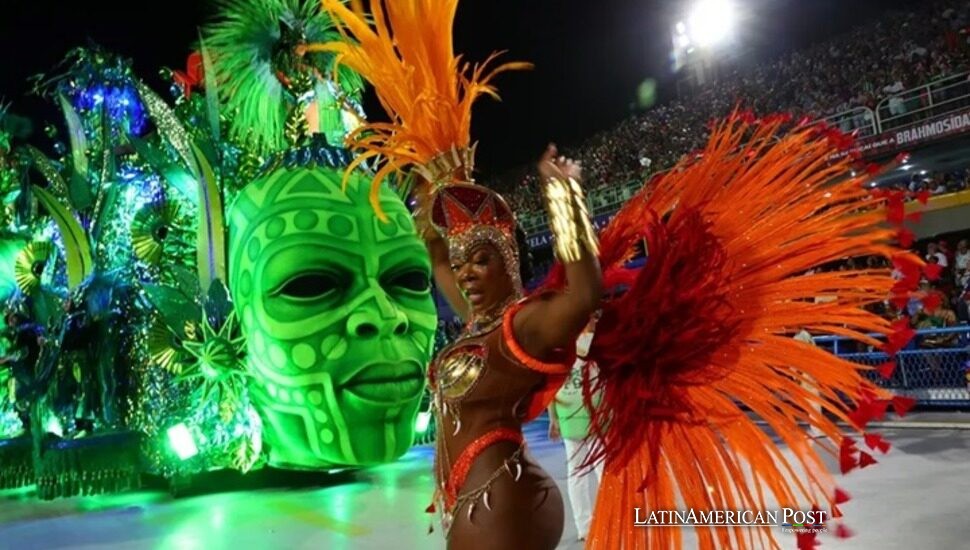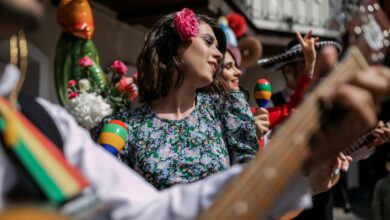Brazil's Ancient Gatherings Possibly Inspired Carnival's Festive Pulse

Forty years of archaeological pursuits have yielded surprising findings about early gatherings in Brazil, shedding light on how precolonial feasts and cultural rites from more than two millennia ago may lie at the core of the country’s modern carnival tradition.
Early Feasting and Ceremonial Roots
Long before the exuberant parades and electrifying samba rhythms emerged as global symbols of Brazilian carnival, ancient communities in the region appeared to have practiced large-scale celebrations focused on shared meals and handcrafted beverages. Artifacts suggest that more than two thousand years ago, people from various locales converged seasonally to enjoy abundant fish species at the peak of their annual migrations while also participating in communal toasts using rudimentary alcoholic potions. These fish-based gatherings and beverage consumption appear to have held an essential role in uniting different groups, marking rites of passage, and forging alliances.
By examining thousands of fragments of earthenware pottery dating from about 2,300 to 1,200 years ago, researchers determined that precolonial populations along the margins of Brazil’s Patos Lagoon processed fish in specialized vessels. This ensured that large quantities of fresh seafood could be preserved or distributed among different families. Next to ceramic pots, the researchers found traces that showed drinks from tubers, sweet corn, or palm fruits. These results point to a transparent system for party planning, where the yearly fish catch turned into a reason for celebration as well as a way to bring villagers together.
The core impetus behind these feasts may have been both economic and ceremonial. Migratory fish species arrived in huge numbers, necessitating rapid collective processing of the abundant catch. In that context, many individuals from an array of backgrounds, including travelers from other territories, likely pitched in to prepare or preserve the fish. Such encounters could easily have led to social gatherings brimming with music, dancing, and, as suggested by the evidence, the consumption of rudimentary brews. The synergy of a seasonal surplus of fish and the camaraderie of feasting might have laid the foundation for later carnival-like celebrations.
Notably, the infrastructure supporting these feasts reveals that the region’s inhabitants built earthen mounds called “Cerritos” along the lagoon’s edges. Although the best-known purpose of these mounds was to serve as burial sites or territorial markers, their physical elevation provided natural gathering spots above high seasonal waters. Through these vantage points, different groups could unite to share knowledge, honor ancestors, and celebrate the fleeting abundance of migratory aquatic life. In the process, generations of feasting possibly seeded the seeds of a festival tradition that persists through modern carnival pageantry.
The Archaeological Discovery Along Patos Lagoon
At the center of this theory rests an extensive collection of ceramic pieces gathered next to several locations near the Patos Lagoon. The clay fragments hold molecular traces that experts tested with methods to spot organic marks. A number of items had fish remains as well as proof of plant fermentation – most likely from tubers or palm sources. While the exact recipes remain speculative, the data demonstrates that entire vessels were dedicated either to preparing fish-based meals or to brewing alcoholic drinks—important clues regarding specialized tasks during communal gatherings.
The significance of these finds goes beyond mere culinary habits. The presence of advanced ceramic crafting suggests that society is skillful at designing cooking implements suitable for large group consumption. This advanced technology helped them handle mass quantities of fish during the crucial months when certain species, such as Corvina de boca Blanca (a migrating fish variety), surged through the waters. The specialized vessels made large-batch fermentation possible, so guests enjoyed the potent drinks and built connections with others.
A prior examination of ancient bones from this region reveals that inhabitants maintained diverse food sources. These groups mixed a variety of grains as well as fish or other water-based sustenance. Some experts reason that people might have traveled from interior areas to the lagoon, joining maritime or lagoon-based communities for these seasonal feasts. This lively interchange of groups likely solidified networks of cooperation, trade, and ritual activity, culminating in momentous celebrations that could last several days.
The discovery sheds light on how ancient people lived before colonization and shows how hard it is to keep archaeological items safe in wet locations. A mix of moisture, along with changing water levels at the lagoon’s edge, can damage these objects if they remain exposed instead of buried deep under protective sediment. The earthen mounds—some of which rose to four meters in height—helped preserve both the ceramics and the intangible memories of how people revered these communal spaces. Before these digs, the significance of Cerritos to broader social dynamics was often undervalued or misunderstood.
Linking Ancient Rites to Modern Festivities
Many anthropologists and historians now see the carnival as more than a simple carnival of color and music: it is the direct successor to communal feasts going back centuries, perhaps even further. While carnival today celebrates myriad elements—Catholic traditions, African influences, and contemporary artistry—the impetus for joyous gatherings underpinned by abundant food and dancing resonates with the precolonial heritage. The occasional presence of improvised alcoholic drinks mirrors the notion of novelty and indulgence that shaped early seasonal events.
Research shows how ancient communities without written records relied on periodic assemblies linked to animal movement patterns or crop cycles. These meetings fulfilled key community needs. The gatherings served as a place where people made partnerships and settled disagreements. A structured environment lets groups arrange marriages and conduct ceremonies to honor the deceased. The synergy of large-scale fish arrivals, elaborate cooking, and boisterous collective experiences parallels modern carnival’s ephemeral yet intense communal bonding. Although carnival underwent transformations through colonial influences, enslaved populations, and Catholic liturgies, remnants of the ancestral impetus to unite people around bountiful harvest remain.
Research into such ties lets modern Brazilians discover new views about carnival’s origins and gain a better grasp of the native customs behind the festivities. A deeper look shows the event as more than just a mix of colonial traditions. Experts point out that communities across many regions celebrate major seasonal events tied to harvests or natural cycles. In the case of Brazil, the environment’s bounty—especially around Patos Lagoon—helped shape communal behavior that lingers in aspects of the carnival’s lively dance, music, and sense of ephemeral wonder.
Some neighborhoods close to Patos Lagoon aim to restore elements of these rituals as well as blend them with today’s carnival customs. Local event boards or cultural groups could share a very compelling story if they feature this heritage: carnival represents the latest part in an old tale about people who build connections through celebrations of plenty. The lesson, anthropologists suggest, is that festival traditions adapt with time and influence, yet their essence often remains the same—merging survival imperatives with communal euphoria.
Preserving the Cerritos and Understanding Cultural Heritage
One of the key lessons from this archaeological venture is the vulnerability of these ancient earthen mounds. The cerritos have fulfilled various roles across time periods, from places of burial to elevated shelters above flood zones. Agricultural expansion or property development now threatens many of these mounds with damage. A group of archaeologists states these structures hold deep cultural value or connect past traditions to present day identity. The protection of native heritage deserves significant attention in research.
The earthen mounds serve as archives of customs that scientists must examine. Layers of dirt beside artifacts show how tribes managed resources, held ceremonies or adapted to climate shifts. As weather patterns become harsh, insights from ancient methods could help present day communities preserve essential ways of life.
A clear connection exists between historic feast celebrations and modern carnival festivities in building social ties. Though the carnival has evolved into a widespread celebration, its indigenous foundation provides historical context. Sacred practices, as well as community connections, thrived in precolonial periods – as native rituals demonstrate. The fact that the carnival’s roots date back millennia adds real significance to its cultural value.
A team of experts asks people to note that carnival did not appear by chance, even though African or European influences shaped its growth through time. Instead, it may serve as an ongoing manifestation of the deep cultural impulse to gather, feast, and celebrate cyclical natural events. The archaeological findings from the Patos Lagoon area serve as clear evidence of how deep-rooted this festive spirit remains. The data confirms Brazil’s carnival as more than just a celebration but a peak moment that stems from centuries-old traditions of shared happiness.
Also Read: Drought Forces Big Tech to Rethink Data Centers in Latin America
If government authorities, local communities, and specialized institutions can collaborate in preserving the Cerritos and the knowledge gleaned from them, the result could be more than academic publications. It could help Brazilians fully embrace a carnival narrative stretching thousands of years, forging a unifying identity that merges the indigenous, the colonial, and the global. In so doing, carnival might remain not just a spectacle but a dynamic legacy shaped by uncountable generations that found unity in the simplest shared acts—enjoying nature’s bounty, raising a collective cup, and dancing to the rhythms that define them.





